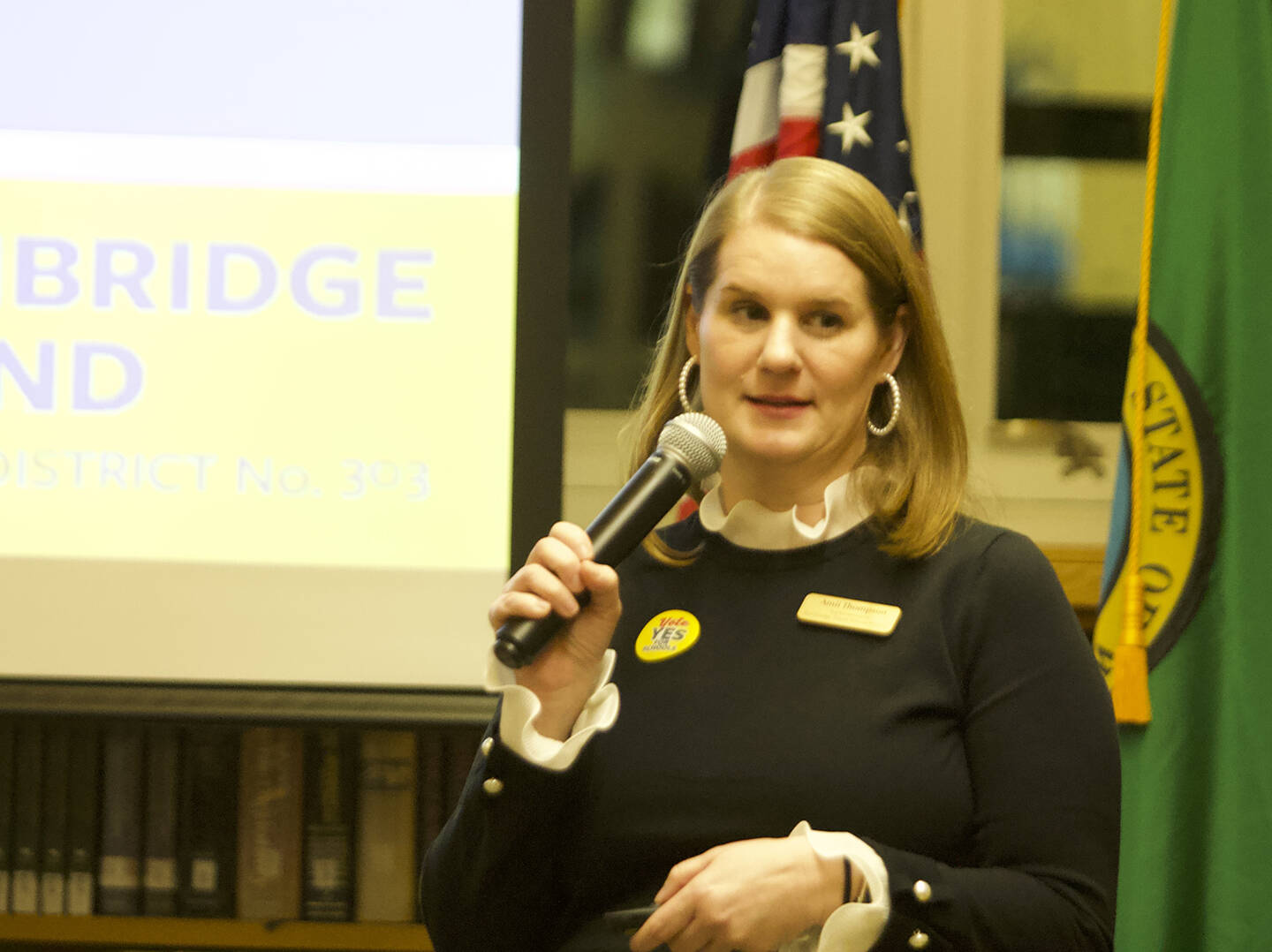The Bainbridge Island School District numbers just didn’t add up.
Acting superintendent Amii Thompson revealed at a meeting Feb. 8 that the sudden budget shortfall of $4.5 million discovered in October is actually closer to $500,000 — and would not necessitate any school closures or consolidations.
That announcement comes as the district director of finance, Kelly Pearson, has vacated her post.
“Like many of you, I am feeling relief and anger in tension,” school board president Mark Emerson said, echoing an earlier sentiment from Thompson. “Amii is amazing […] Her time and consideration is exactly what we should expect from district leadership.”
While the October numbers were accurate, they were based on limited information, a report says. The district had neglected to investigate all potential cost-saving analyses before sharing the numbers with the public, and there were “errors in future financial forecasting,” Thompson said.
Thompson proposed the following cost-saving measures: move personnel costs to existing capital levy funding, cut staff overtime, forgo underused software and be more frugal with materials, supplies and operating costs.
“We do not want new ‘things’ to appear in our buildings while we are dealing with a deficit,” said Thompson. “We can start by really asking ourselves what we need and how we can reduce expenditures.” She recommended that staff look to support from the Bainbridge Schools Foundation and Parent-Teacher Organization for funds.
As far as income goes, the district will rely on the upcoming Enrichment and Operations levy, with voter approval, and continue to advocate for an increase to state funding.
Additionally, the district would cede planning to the Long Range Strategic Facilities Planning Committee, run by Dane Fenwick, to address the structural safety of several buildings and potential construction of a centralized campus. Community involvement would be baked into most decision-making processes in the future.
Those solutions would steer the district away from the crisis until at least 2025-26, provided the levies pass with more than 50% approval Feb. 13. If they fail, then the district has a 10-day stopgap to re-propose the legislation for another vote in April. If the levies fail then, BISD would be short $15.9 million and have to look for major cuts.
In response to Thompson’s report, the BI school board voted to stop proceeding with several cost-saving measures — including the proposed school closures and consolidations, which were very controversial in the community.
“I came here with a speech, but I guess I don’t have one anymore,” said James Stoner, one of the four public commenters. “This is the best news possible.”
Some parents, and later members of the School Closures Advisory Committee, a group of 110 citizens and district employees formed to advise the board on school closures, began to look into the numbers in October.
Jill Anderson, Bainbridge High School class of ‘04, member of the SCAC and parent of a second-grade student, recalled a proposal to close Ordway and Commodore elementaries in 2016-17 and 2013 that closely resembled the plan put forward by the district in December.
Total enrollment at BISD, while significantly lower than pre-pandemic years, did not warrant school closures, she said. A similar scenario was taking place in the Olympia School District last year, which was suffering almost 50% total enrollment. BISD has held steady at about 80% since 2020, with enrollment down only about 52 students.
“You can’t close schools if you have nowhere to put kids,” Anderson said. “Consolidation would not have saved much money.”
She speculated that the district faced a time crunch when it discovered the discrepancy in the budget. Rather than methodically review the numbers, it “went back to the old closures plan and pulled it off the shelf,” anticipating that the attractive new facilities at Blakely and x̌alilc elementaries would placate displaced families.
Both Anderson and Ordway parent Adriana Zimova were encouraged by Thompson’s readiness to involve the community, but dismayed that the district did not seem to make an effort until Thompson stepped in.
In the future, Zimova hoped to see the district continue to use community engagement and move toward a bond measure.
“I was very encouraged last night by talk of a bond to build a centralized campus,” she said. “I felt trust in Thompson’s process. She was asking all the right questions about the budget deficit.”



